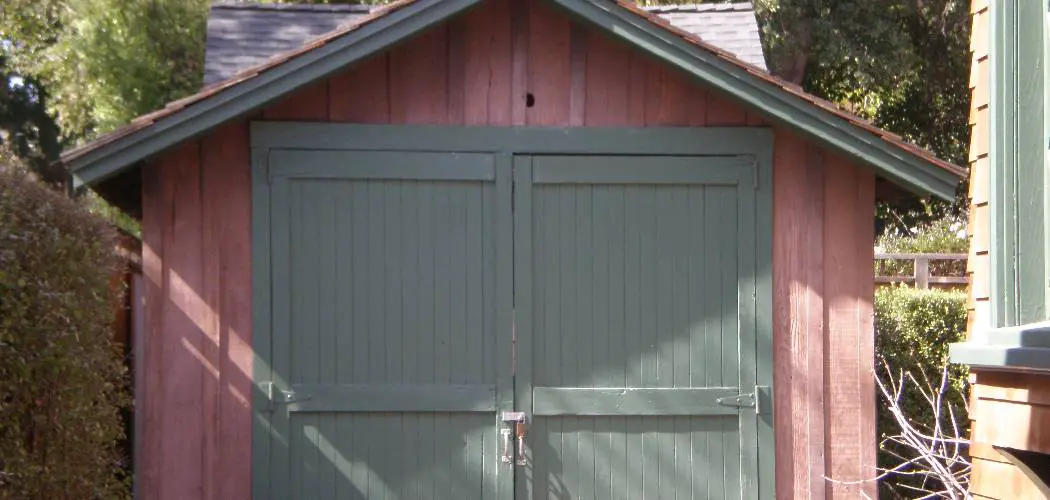Are you looking to give your garage door a makeover and add an element of rustic charm without compromising on sturdiness? Cladding your garage door with wood is the perfect way to achieve this.
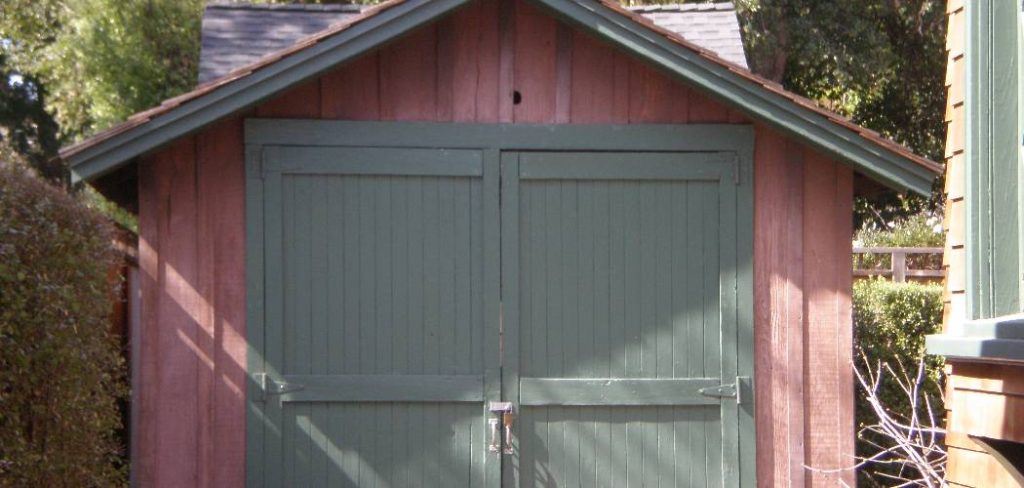
There are a number of reasons why people might want to clad their garage door in wood. Whether you’re looking for an easy way to enhance your home’s curb appeal or add a touch of rustic charm and warmth, cladding your garage door with wood can be a great solution! Cladding is used not only for garage doors but also to decorate other items such as furniture, decorative pieces, and even walls.
Keep reading to find out how to clad a garage door with wood and how you can get the most out of this project.
What Will You Need?
To clad your garage door with wood, you will need the following:
- Plywood
- Wooden boards
- Nail gun/screws
- Sandpaper
- Paint or stain
- Primer (optional)
Once you have gathered all the necessary materials, you can begin cladding your garage door with wood.
10 Easy Steps on How to Clad a Garage Door With Wood
Step 1: Measure and Cut the Plywood
The first step is to measure and cut the plywood. Measure how much plywood you’ll need to fit over the panels of your garage door. Make sure you cut larger than needed so that there is enough material to cover the entire surface. You can use a jigsaw or power saw to make these cuts.
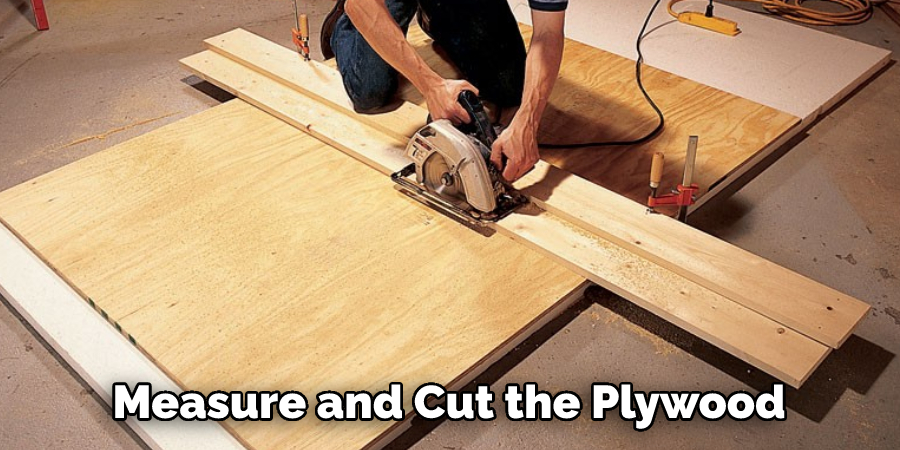
Step 2: Attach the Plywood Sheet to Your Garage Door
Once you have measured and cut the plywood, you can attach it to your garage door. Use a nail gun or screws to secure the plywood sheet in place. Make sure that the edges are all nice and tight so that everything fits securely together.
Step 3: Attach Wooden Boards
Once you have attached the plywood sheet, you will need to attach wooden boards to it. Start by measuring how much wood you’ll need for each board, and then use a saw to make the cuts. Once all of your cuts are made, you can begin attaching them to your plywood panels with either nails or screws.
Step 4: Sand Down Uneven Areas
You may find that some wood areas are not complete even after attaching the wooden boards. This is normal and can be easily fixed with sandpaper. Use fine-grit sandpaper to smooth down any rough spots or uneven areas gently.
Step 5: Prime (optional)
If desired, you can prime your cladding before painting or staining it. Priming the wood will help protect it from water damage and rot and enhance the look of your finished product. Use an oil-based primer for best results, and make sure to follow the manufacturer’s instructions for how long you should wait before painting over it.
Step 6: Paint or Stain Your Wood
Once you have primed (or if you chose not to prime first), it is time to paint or stain your wood. If you are using paint, make sure to use high-quality exterior paint that is specifically designed for outdoor/wood surfaces. For best results, use several thin coats of paint and make sure to let them dry fully in between each coat.
Step 7: Reattach Your Garage Door Hardware
Once the cladding has been painted or stained and dried, you can begin to reattach your garage door hardware. Depending on how you attached the plywood and boards, you may have to use new screws or nails to ensure everything is secure. Be careful not to over-tighten the screws or nails, as this could damage your wood cladding.
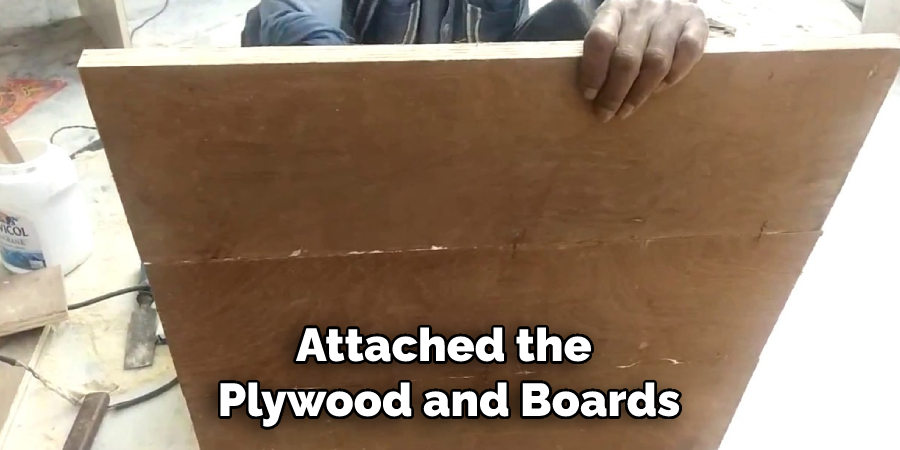
Step 8: Weather-Proof Your Cladding
Once all of your hardware has been reattached, it is important to weatherproof your cladding. Use a waterproof sealant that is specifically designed for outdoor wooden surfaces. This will help protect against moisture damage and rot while also enhancing the look of your finished product.
Step 9: Touch Up Any Areas That Need It
If there are any areas where paint or stain was not evenly applied, you can touch them up with a small brush. Make sure to clean up any excess before letting the finish dry. Ensure that all of the hardware is securely reattached, as well.
Step 10: Enjoy Your Beautiful Cladding!
Once you have completed all of the above steps, you can enjoy the beautiful cladding on your garage door! With a few simple steps, you have transformed a mundane garage door into something that stands out and adds beauty to your home. Now all that is left to do is admire how great it looks.
We hope this guide has been helpful in teaching you how to clad a garage door with wood. If you follow the steps carefully and use the right materials, you can transform your boring old garage door into something truly unique. Good luck, and happy creating!
5 Additional Tips and Tricks
- Make sure to treat the wood with a weather resistant sealer or paint before installation. This will protect your garage door from moisture and provide an additional layer of insulation.
- Measure twice. Cut once! With this particular project, accuracy is key – so it’s important that you get the measurements right before cutting your wood for cladding.
- Use galvanized nails and screws to attach the wood to your garage door. Galvanized fasteners are rust-resistant and won’t corrode over time like regular steel nails and screws might.
- Consider installing tongue-and-groove panels rather than individual planks of wood – it will give your finished product a more polished look and be quicker to install too.
- Make sure to add a sill plate or threshold at the bottom of your garage door, as this will help prevent water from pooling underneath it. Additionally, consider using rubber weather stripping along edges and joints to increase insulation further and help keep out any moisture or pests.
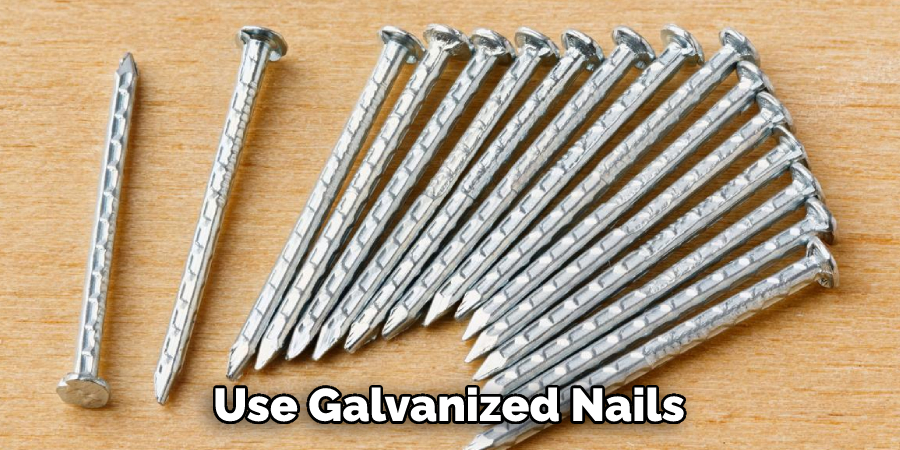
By following these tips and tricks, you’ll be able to clad your garage door with wood easily!
5 Things You Should Avoid
- Avoid using nails for cladding. Nails can loosen over time, making the clad job look shoddy and possibly damaging your garage door.
- Don’t try to skimp on wood pieces. Using too few wood planks can create gaps in between them that still allow access to insects, debris, and water.
- Avoid using untreated wood for cladding; this could cause the garage door to warp or rot faster than treated wood would.
- Don’t power sand the surface of your garage door before cladding; this will likely damage its finish and may even affect how it operates if you inadvertently sand away some of its mechanical parts.
- Lastly, avoid trying to clad a weather-damaged garage door. Cladding a garage door with wood will not fix the underlying issue; you must repair the weather damage first. Once that’s done, then you can move on to cladding it with wood.
By following these tips and taking the time to do it right, you can create a beautiful cladded garage door that will last for many years to come! Have fun and be creative in your design, as no two garages are alike!
Can You Put a Veneer on a Garage Door?
Yes, you can put a veneer on a garage door. Veneers are thin slices of wood that can be used to make the surface of any material look like wood. This is an economical and attractive way to clad your garage door with wood without buying and installing individual planks. To apply a veneer, you’ll need to use contact cement or another adhesive specifically for applying veneers. Once applied, it should last as long as the underlying material does – how great is that?
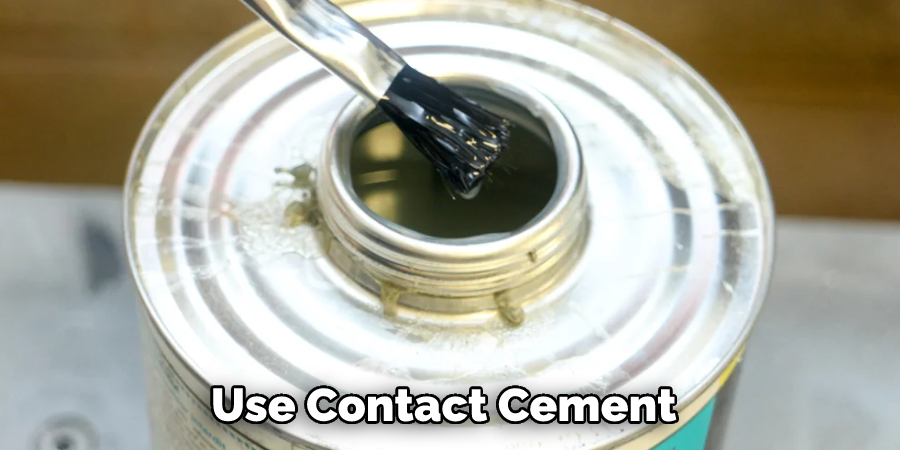
So if you’re looking for a quick and easy way to give your garage door some new life, consider using a veneer! With just a few simple steps, you can transform the exterior of your garage door and add a unique touch to it. Have fun and happy cladding!
Conclusion
Cladding a garage door with wood can give you the aesthetic beauty of a wooden garage door without the hefty price associated with it. Once you’ve gone through each step on how to clad a garage door with wood and ensure that your cladding is securely in place, you have done a great job. Cladding is not something that should be underestimated, yet if done correctly, it can extend the durability of your garage door and provide an improved look.
With these tips in mind and enough patience to execute this project well, you’ll be able to transform your plain steel garage door into a sophisticated wooden masterpiece that will impress onlookers for years to come.
Hopefully, this article has given you all the information you need. When cladding your garage door, keep in mind that any changes to its exterior may affect how it operates – so be sure to double-check how everything works after installation is complete. Good luck, and have fun!

